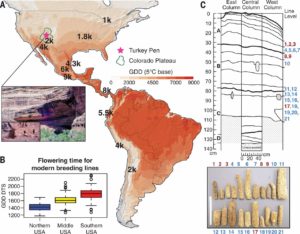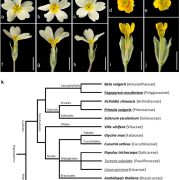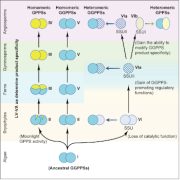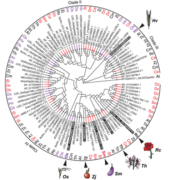Genomic estimation of complex traits reveals ancient maize adaptation to temperate North America
 Maize (corn), an important staple of the diet in ancient and modern times, was cultivated at higher altitudes in the southwestern United States, around 2,000 years after its introduction to the lowland US regions. In order to better understand how maize later adapted to high altitudes, authors sequenced the genomes of fifteen 1,900-year-old maize species. Comparison of these sequenced ancient genomes to modern genomes revealed several complex genetic traits, such as an earlier flowering time, that allowed ancient maize to adapt to shorter growing seasons at higher altitudes. Understanding the genetic traits that helped ancient maize to adapt to environmental changes can inform plant breeders as to how to adapt maize to the changing global climate. (Summary by Tyra McCray) Science 10.1126/science.aam9425.
Maize (corn), an important staple of the diet in ancient and modern times, was cultivated at higher altitudes in the southwestern United States, around 2,000 years after its introduction to the lowland US regions. In order to better understand how maize later adapted to high altitudes, authors sequenced the genomes of fifteen 1,900-year-old maize species. Comparison of these sequenced ancient genomes to modern genomes revealed several complex genetic traits, such as an earlier flowering time, that allowed ancient maize to adapt to shorter growing seasons at higher altitudes. Understanding the genetic traits that helped ancient maize to adapt to environmental changes can inform plant breeders as to how to adapt maize to the changing global climate. (Summary by Tyra McCray) Science 10.1126/science.aam9425.










Leave a Reply
Want to join the discussion?Feel free to contribute!